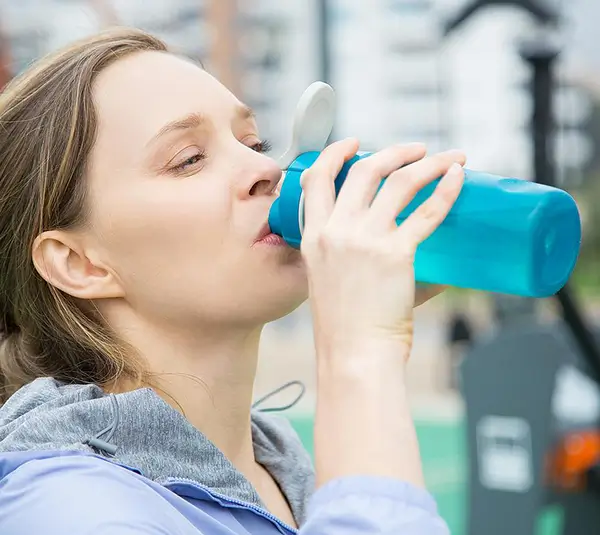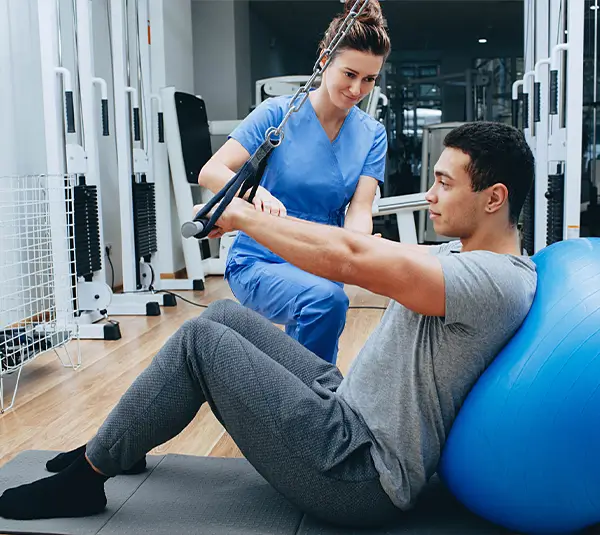The Science of Sports Nutrition, Training, and Injury Prevention
- Abeera Marium Siddiqui
- February 29, 2024
- 12:10 pm

In the world of competitive sports, where the margins between victory and defeat are razor-thin, athletes and coaches are constantly seeking ways to gain an edge over their opponents. Advancements in sports science have shed light on the intricate relationships between nutrition, training, and injury prevention, providing valuable insights into how athletes can maximize their performance and longevity. In this blog, we will explore the scientific principles that underpin these crucial aspects of athletic success.
Sports Nutrition: Fueling the Body for Peak Performance
Proper nutrition is the foundation upon which athletic excellence is built. The foods and supplements that athletes consume have a direct impact on their energy levels, recovery, and overall health. Understanding the science behind sports nutrition is crucial for optimizing performance.
Macronutrients and Energy Balance
The three primary macronutrients – carbohydrates, proteins, and fats – play distinct roles in fueling the body and supporting athletic endeavors. Carbohydrates provide the primary source of energy for high-intensity activities, while proteins are essential for muscle repair and growth. Fats, in moderation, contribute to energy storage and overall health.
Achieving the right balance of these macronutrients is vital for athletes, as it helps to maintain a healthy body composition, support recovery, and prevent nutrient deficiencies that can hinder performance.
Hydration and Electrolyte Balance
Proper hydration is another critical aspect of sports nutrition. Dehydration can lead to a host of problems, including decreased endurance, impaired cognitive function, and increased risk of injury. Electrolytes, such as sodium, potassium, and magnesium, play a crucial role in regulating fluid balance and supporting muscle function.
By understanding the science behind hydration and electrolyte balance, athletes can develop strategies to maintain optimal hydration levels before, during, and after training and competition.

Supplements and Ergogenic Aids
The use of supplements and ergogenic aids (performance-enhancing substances) in sports has been a topic of ongoing debate and scientific investigation. While some supplements, such as protein powders and creatine, have been shown to provide modest performance benefits when used responsibly, others may carry significant health risks. It is essential for athletes to rely on scientific evidence and guidance from qualified professionals when considering the use of supplements or ergogenic aids, as the potential risks and benefits can vary greatly.
Optimizing Performance and Minimizing Injury Risk
Proper training and conditioning are essential for maximizing athletic potential and reducing the risk of injury. Understanding the scientific principles behind exercise physiology, biomechanics, and motor learning can help athletes and coaches design effective training programs.

Exercise Physiology and Adaptation
Exercise physiology explores the body's response to physical activity and the adaptations that occur as a result of training. By understanding the physiological mechanisms behind cardiovascular endurance, muscular strength and power, and flexibility, athletes and coaches can tailor their training regimes to target specific areas for improvement.
Biomechanics and Movement Analysis
Biomechanics is the study of movement and the forces acting on the body during athletic activities. By analyzing movement patterns and technique, biomechanists can identify areas of inefficiency or increased strain that may contribute to injury risk. This knowledge can be used to optimize technique and develop targeted strength and conditioning programs to address movement deficiencies.
Motor Learning and Skill Acquisition
The ability to acquire and refine complex motor skills is essential for success in sports. Motor learning principles provide insights into how the brain processes and retains movement patterns, allowing athletes to develop efficient and effective techniques through practice and feedback. By applying principles of motor learning, coaches can design training methodologies that promote skill acquisition and retention, ultimately enhancing performance and reducing the risk of injury associated with poor technique.
Injury Prevention and Rehabilitation
Despite the best efforts to optimize training and conditioning, injuries are an unavoidable part of competitive sports. Understanding the science behind injury prevention and rehabilitation is crucial for minimizing the impact of injuries and promoting a safe and timely return to play.
Injury Mechanisms and Risk Factors
Identifying the specific mechanisms that cause sports-related injuries and the associated risk factors is a key step in developing effective prevention strategies. Through research and data analysis, sports scientists can pinpoint common injury patterns, biomechanical flaws, and environmental factors that contribute to injury risk.
Injury Prevention Programs
Armed with an understanding of injury mechanisms and risk factors, sports medicine professionals can design comprehensive injury prevention programs. These programs often incorporate elements such as strength training, flexibility exercises, proprioceptive training (balance and coordination), and technique analysis to address potential weaknesses and reduce the likelihood of injury.
Rehabilitation and Return-to-Play Protocols
In the event of an injury, the science of rehabilitation plays a vital role in facilitating a safe and effective recovery. Sports medicine professionals utilize evidence-based techniques, such as therapeutic exercise, manual therapy, and modalities like cryotherapy and electrotherapy, to promote healing and restore function. Additionally, comprehensive return-to-play protocols, guided by objective criteria and continuous monitoring, help to ensure that athletes are physically and psychologically prepared to resume competitive activities without undue risk of reinjury.
Conclusion
The science of sports nutrition, training, and injury prevention has revolutionized the way athletes and coaches approach competitive success. By embracing the principles of exercise physiology, biomechanics, motor learning, and sports medicine, athletes can optimize their performance, reduce injury risk, and prolong their careers. As sports science continues to evolve, the integration of these disciplines will become increasingly crucial for unlocking the full potential of human athletic achievement.
CATEGORIES


Your go-to destination for diverse and engaging content!
Explore a world of knowledge, entertainment, and connection right at your fingertips.
POPULAR POSTS





